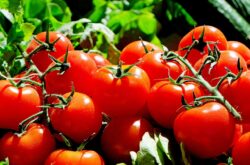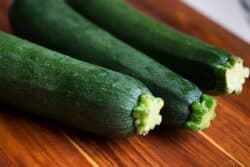How to Start a Backyard Vegetable Garden. If you are anything like me, you always look for ways to save money. With high gas and grocery prices and shortages, we must look for ways to save money and feed our families.
It can get a bit overwhelming. Have you ever considered starting a home backyard garden? This can even work if you have a sunny patio area. It is a great way to feed your family fresh and healthy produce and save money.
I have planted five fruit trees on my property, but last summer, I took a proper crack at home gardening. My little garden included okra, tomatoes, peppers, eggplant, squash, herbs, jalapenos, oregano, and onions. This year, I will expand my garden by using raised beds.
Gardening gives me great accomplishment as I watch the process from seed to harvest. And the sunshine and the exercise are a bonus. I hope you take on the challenge of starting a small home garden this year. Here’s an in-depth guide on how to begin.
Easy Steps to Starting Your Own Vegetable Garden
First Steps to Planning Your Backyard Vegetable Garden
Choose the Right Location
Most vegetables and fruits need at least 6-8 hours of sunlight daily. Find a spot in your yard that receives adequate sunlight.
Size Matters: Start small. A garden of 10×10 feet is a good size for beginners. Gardening can be overwhelming if you start too big too fast. Don’t overwhelm yourself with a large garden to start. A backyard vegetable garden is just that, even when you decide only to plant one crop.
Decide What to Grow: Consider what you like to eat and what grows well in your climate. Easy starters include tomatoes, peppers, radishes, lettuce, spinach, and herbs. The first vegetable I planted and harvested was a radish. This is a particularly easy and quick vegetable to grow. It is easy to give the children their section just for radishes.
Preparing the Ground
Testing the Soil: Get a soil test kit from a local nursery to understand your soil’s pH and nutrient levels.
Improving Soil Quality: Testing your soil will let you know its pH and what additional things you need to add for a better crop. Soil compost, peat moss, or other organic matter improve the soil.
Tilling the Soil: Use a spade or a small tiller to break up the soil to a depth of about 12-14 inches. Remove any stones, roots, or debris. I purchased a Build Hard Tiller on Amazon for under $200, and it has served me well and made my life easier.
Choosing Plants
Start with Seedlings: For beginners, it’s easier to start with young plants rather than seeds. You can buy these at a local nursery. If you want to begin with an older plant, Home Depot, Lowes, and smaller stores sell them. Last year, I purchased the Survival Vegetable Seeds Garden Kit from Amazon. It had 35 varieties of seeds. I chose the source that produced the least time and was very successful.
Acclimatizing Plants: Gradually introduce indoor-grown plants to outdoor conditions over a week to harden them off.
Planting
Follow Instructions: Pay attention to the spacing guidelines on seed packets or plant tags. Giving each seedling the required space is particularly important, as you do not want to hurt your plants’ size and health. Each plant needs the proper amount of room to grow to its correct size.
Plant at the Right Depth: This is crucial for the plant’s health. Deep or shallow can help growth.
Watering and Maintenance
Watering Needs: Most vegetable gardens need about an inch of water per week. Water is expensive, and time is precious. It’s better to water your backyard garden deeply and less frequently than little and often.
Mulching: Use mulch to retain moisture, suppress weeds, and cool the soil.
Weeding: Regularly remove weeds that compete with your plants for nutrients and water.
Dealing with Pests and Diseases
Prevention: Healthy, well-cared-for plants are less susceptible to problems.
Natural Solutions: Use organic pesticides or introduce beneficial insects like ladybugs for pest control.
Harvesting
- Harvest at Peak Ripeness: Learn the signs of ripeness for each plant. Regular harvesting often encourages more production.
Extending Your Garden
Seasonal Planting: Plant new crops in different seasons. Many leafy greens thrive in cooler temperatures. Companion Planting: Some plants grow better together—research companion plants for a healthier garden.
Learning and Adapting
Keep a Garden Journal: Note what works and what doesn’t. This information is invaluable for improving your garden each year.
Educate Yourself: Read gardening books, join online forums, or participate in local gardening clubs.
Use Pots & Buckets: Most plants in your backyard vegetable garden can be grown in pots. One of my best-producing cucumbers was grown in a pot.
Enjoying Your Garden
Relish the Experience: Beyond the harvest, enjoy the process of tending to your garden and watching it grow.
Starting a home garden requires effort and patience, but the rewards are bountiful. With these steps, you’ll be well on your way to a thriving garden that provides fresh produce and a satisfying hobby. Gardening is a learning experience, so take your time with initial challenges. Enjoy the journey!
Common Garden Pests
Home vegetable and flower gardens can be susceptible to various pests and diseases. Identifying and managing these backyard challenges effectively is crucial in maintaining a healthy garden. Here are some common problems and diseases that gardeners might encounter:
Back Yard Vegetable Common Pests
Aphids: Small, soft-bodied insects that can be green, yellow, red, black, or brown. They suck sap from plants, causing leaves to curl, wilt, or yellow. They also secrete a sticky substance called honeydew, which can lead to sooty mold.
Caterpillars: The larvae of butterflies and moths, caterpillars chew on leaves, leading to significant damage. They can be handpicked or controlled with Bacillus thuringiensis (Bt), a natural bacterium.
Slugs and Snails: These pests feed on various plant materials, particularly seedlings. They leave slimy trails and irregular holes with smooth edges in leaves and flowers. Strategies include beer traps, diatomaceous earth, or copper barriers.
Japanese Beetles: These metallic green and copper beetles feed on buds and leaves, often skeletonizing the foliage. Handpicking, neem oil, and pheromone traps can help control them.
Spider Mites: Tiny spider-like pests that cause stippling on leaves and can spin delicate webs. They thrive in hot, dry conditions and are controllable with insecticidal soap or neem oil.
Whiteflies: Small, winged insects that congregate on the undersides of leaves. They suck plant juices and can cause yellowing or death of leaves. Yellow sticky traps and insecticidal soaps are effective.
Common Diseases
Powdery Mildew is a fungal disease that appears as a fine white coating on leaves and stems. It often occurs in dry, shady, and crowded conditions. Pruning for air circulation and fungicides can help control it.
Blight (Early and Late): These fungal diseases cause spots on leaves and fruit, leading to rotting. Late blight is particularly destructive to tomatoes and potatoes. Proper spacing, crop rotation, and fungicides are preventive measures.
Rust: Shows as rust-colored spots on leaves and stems, hindering plant growth. It’s more common in moist conditions. Remove affected parts and apply fungicide if necessary.
Root Rot is caused by overwatering or poor drainage, leading to decayed roots. Prevention includes proper watering and ensuring good soil drainage.
Mosaic Virus: This virus causes mottled green and yellow leaves, stunted growth, and poor yields. It’s spread by aphids and through human handling.
- To stop the spread of disease among plants, it’s essential to remove diseased plants.
- Integrated Pest and Disease Management
Control the Things you Can Control
Regular Monitoring: Regularly inspect your garden for signs of pests and diseases.
Cultural Controls: Practices like crop rotation, resistant varieties, and proper spacing can reduce problems.
Biological Controls: Encourage beneficial insects that prey on pests.
Chemical Controls: Use as a last resort, opt for organic or less harmful products when possible.
Prevention and early intervention are crucial to managing pests and diseases in your garden. Maintaining a healthy, balanced garden environment reduces the likelihood of severe problems.
The Healing Benefits of Gardening
Gardening offers a multitude of healing benefits, both physically and mentally. Here are six notable ones:
1. Stress Reduction
Engaging in gardening activities can significantly reduce stress levels. The combination of physical activity, being in nature, and the peacefulness of the environment helps lower cortisol levels, the body’s primary stress hormone.
2. Improved Mental Health
Gardening can improve mental health by providing a sense of achievement and purpose. It is also therapeutic and can help reduce symptoms of depression and anxiety. Nurturing plants and seeing them grow can be incredibly rewarding and uplifting.
3. Physical Exercise
Gardening involves various physical activities like digging, planting, weeding, and watering. These activities can improve physical health by increasing hand strength and skill. It can also provide moderate cardiovascular exercise, which benefits heart health.
4. Boosts Vitamin D Levels
Spending time outdoors in the garden increases exposure to sunlight, which helps the body produce Vitamin D. This is important for bone health and the immune system.
5. Improved Diet
Growing fruits, vegetables, and herbs can lead to a healthier diet. Consuming homegrown produce is more satisfying and nutritious, as it will likely be fresher and less exposed to chemicals.
6. Cognitive Benefits
Gardening can also offer mental benefits, especially for older adults. It can help improve memory and attention, and the multi-sensory experience of gardening is beneficial in dementia care.
Gardening is a holistic that benefits the mind, body, and spirit. It’s a gentle yet effective way to improve physical health, reduce stress, and bring joy and a sense of accomplishment.
In Closing
As you start your backyard vegetable garden, remember that every seed you plant can bring joy, and each harvest can be a source of pride. This guide, ‘Green Thumb Beginnings,’ will be with you every step of the way. The best gardens come from more than soil and water; they’re grown with love and patience. So, grab your tools and prepare for an exciting and rewarding gardening journey!”


